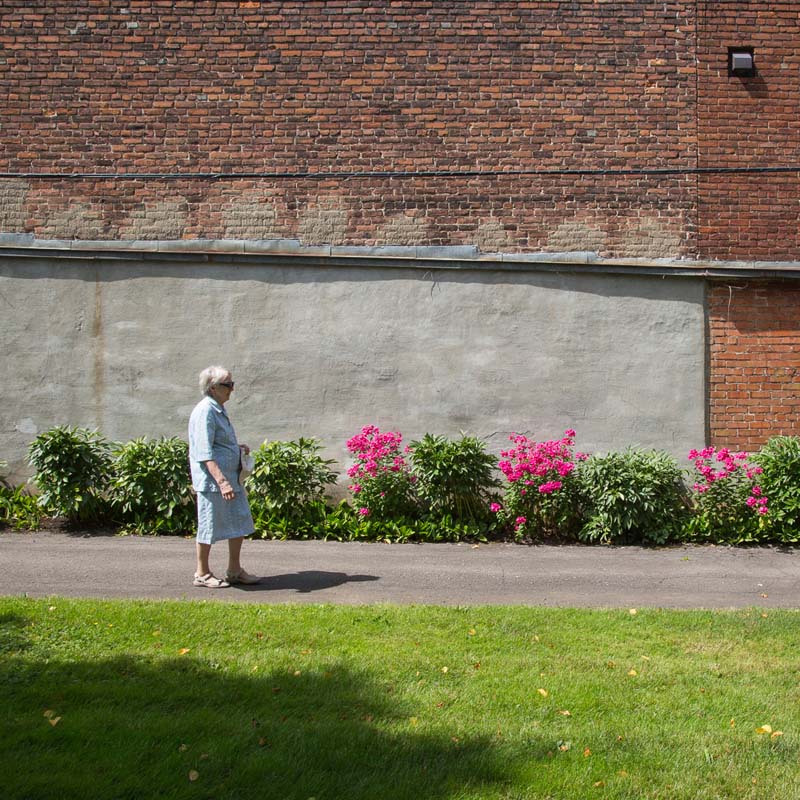[Summer 2024]
by Alexandra Tourigny Fleury
[EXCERPT]
The works presented in the exhibition Corps habité are the result of a relationship that Geneviève Thibault cultivated with the Ursuline Sisters of Quebec City over many years. In 2017, the nuns announced that they had to leave the convent in Old Quebec City that had been home to their congregation since the arrival of Marie de l’Incarnation in 1639, because the community was becoming too aged. Only a small committee composed of four nuns remained in place to reflect on the building’s new vocation. Sensing the importance of documenting the historic event and the heavy emotions associated with it, Thibault made a series of photographs to record traces of the major transition taking place in both the nuns’ lives and the vocation of the heritage site.
The installation opened with a selection of images from the photographic corpus Blanc, which was published in an eponymous book in 2020, capturing the congregation’s last two years at the convent. Chosen in collaboration with the exhibition’s curator, Daniel Fiset, the photographs portray a place dear to the nuns: the Jardin des Mères. At the convent, Thibault recorded everyday moments – nuns strolling or gardening – and documented the presence of plants and architectural elements. Two images of a single vine show a plant that is first green and vigorous, then leafless and desiccated. One nun walks in the radiant summer sun, and another through a heavy cover of snow. The marked unfolding of the seasons suggests a poetic ode to the passage of time, transformation, and renewal. The walled garden – a space was both outdoors and enclosed – offered Thibault a chance to blur the lines between public sphere and private domain, illustrating the tension between cloistered private devotion and the shared social mission characteristic of the nuns’ way of life.
Farther along in the installation, a platform with two chairs on it invited viewers to settle in with three wall projections that appeared one by one, then simultaneously. The videos show the Ursulines in their new home, a residence for the elderly in Beauport, as they watch a digital virtual reality replica of their chapel. The simple montage shows a series of still shots of women sitting, calm and emotional, their faces half-hidden behind large VR headsets. They describe the images they see and poignantly recount the memories evoked by the experience. Close-up shots of their hands and faces reveal small tremors that betray their apparent immobility. As viewers lend an attentive ear to voices made brittle by sentiment and age, they are surprised by a spatialized soundtrack, created by the artist Thibaut Quinchon, featuring a variety of ambient sounds, such as passing cars and footsteps. The platform vibrates in concert with the muffled sounds.
The women are obviously touched by the virtual reconstruction, which Thibault intended first and foremost as a private gift to them – one to which only they have access, as the place of worship is hinted at without ever being seen by the public. It is unveiled, rather, in the absence of its representation, through the reactions of the Ursulines who are seeing it again, perhaps for the last time. In Corps habité, the omissions and silences are as important as the images and words. Between what is hidden and what can be glimpsed, Thibault addresses an issue that has been central to her practice for many years: the blurring of purported lines between public space and private life, between belonging and otherness.
Skilfully exploiting the qualities of photography and video, Thibault exerts control over what is seen and what is not. Images carefully framed, chosen, edited, mounted, and installed in the exhibition space offer a fragmented, deconstructed, and incomplete narrative that leaves much room for viewers’ subjective appropriation. Thibault thus evinces her great respect for the nuns’ private way of life, assigning viewers the status of guest in a unique world that will never be theirs. The spectatorial posture is reinforced but not awkward, as this withdrawal to the exterior seems to offer the best point of view for capturing all the poetic nuances that are manifested in the constant vacillation between overall effect and fragmentation, between disclosure and dissimulation. Translated by Käthe Roth
—
Alexandra Tourigny Fleury is a curator, author, and contemporary art researcher. In her recent research, she explores the themes of care, ritual, and forms of resistance and contestation embodied in everyday life. Along with the people she is close to, she aspires to create instances of space-time in which creation is characterized by kindness, subjective knowledge, and collective and experiential expertise.
—
[ Complete issue, in print and digital version, available here: Ciel variable 126 – TRAJECTORIES ]
[ Complete article, in digital version, available here: Geneviève Thibault, Corps habité — Alexandra Tourigny Fleury
]



